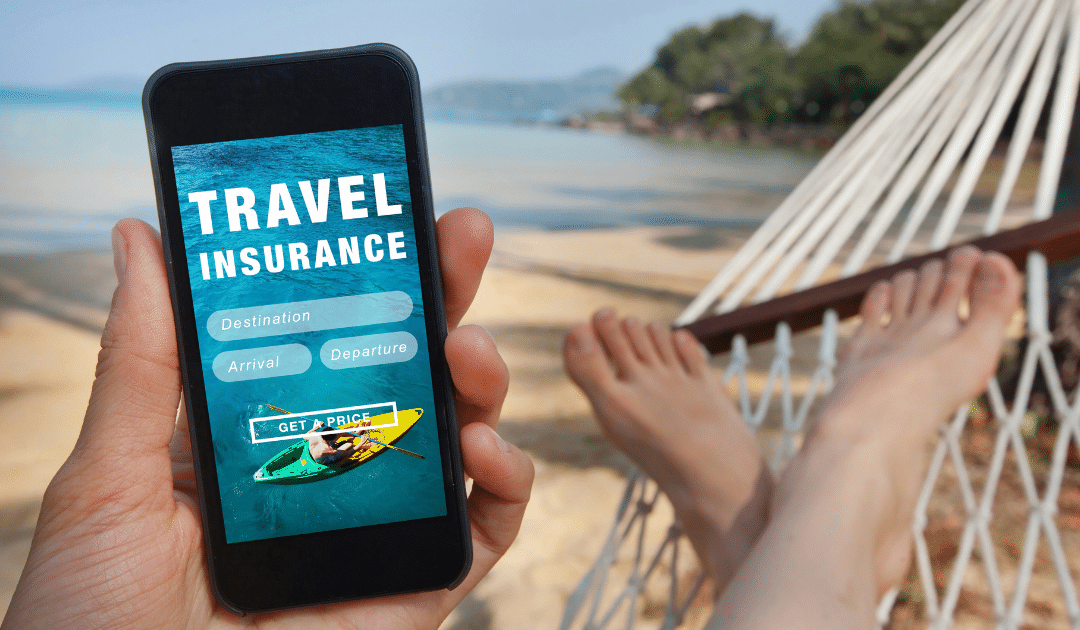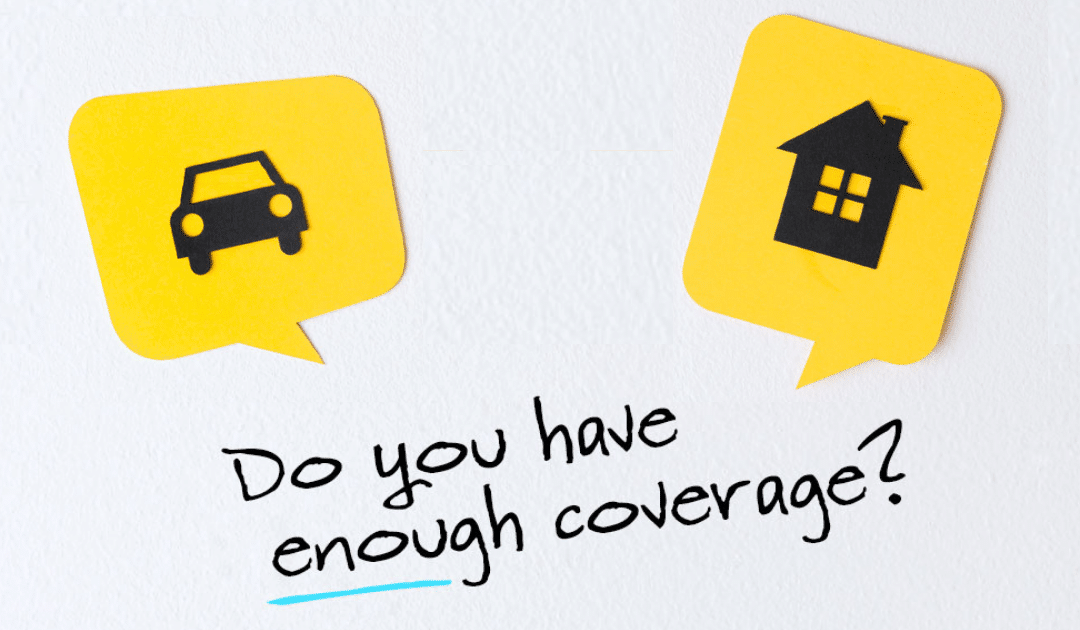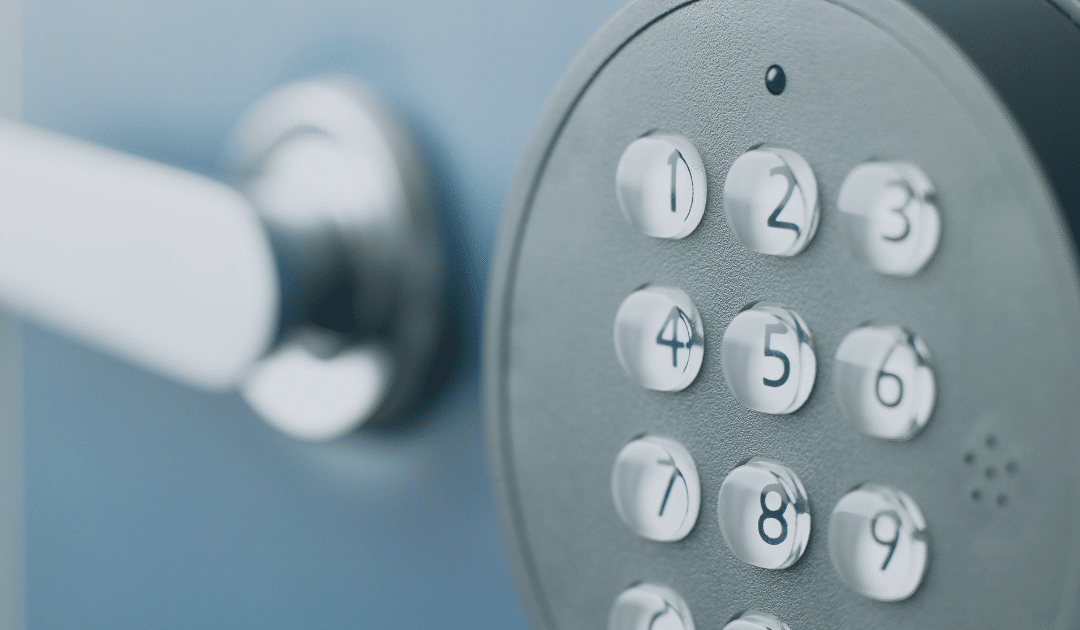
by California Casualty | Travel |
If you’ve ever had to cancel a vacation or had an accident with a rental car, you know the value of insurance. But how much travel and rental car insurance do you need and do you really always need it?
Types of Travel Insurance
The two most popular types of travel insurance are…
- Vacation Plan. It provides the most coverage in a single policy, including trip cancellation, lost luggage, travel delays, emergency medical assistance, and more. This type of plan usually comes with 24/7 assistance.
- Medical Plan. Your health insurance policy doesn’t cover you outside the U.S.— or if it does, it’s often not a lot of coverage. Travel medical plans cover healthcare expenses and can connect you with a local doctor or pharmacy. Some plans cover pre-existing conditions. They also cover emergency medical evacuations, if you need to be airlifted to a hospital.
There also are specialty travel policies that you can buy. These include medical evacuations only, accident insurance, and rental car insurance. Read more about rental car insurance, below.
Why you need travel insurance:
-
- You don’t want to lose all your money from a prepaid trip that has to be canceled (for illness, a funeral, etc.).
- Flights can be delayed, necessitating unexpected expenses for meals and lodging.
- Lost luggage can spoil your trip.
- Accidents happen and health crises occur. Medical evacuations can be costly.
- Travel insurance can provide peace of mind, and assistance when you need it.
What to look out for in a travel insurance plan:
-
- Make sure you insure the full value of your trip. If you just insure your deposit, that’s the amount you’ll recoup.
- Make sure your plan has enough for emergency medical evacuation. This can sometimes be in the thousands of dollars.
- Know the services that come with your policy. It could include translation, concierge services, and 24-hour travel assistance. If you’re paying for these services, you might as well use them.
- Watch out for “cancel for any reason” coverage. Usually this is a substantial extra expense, and in most cases, is not needed. Check the reasons that you can cancel for the standard policy. Usually, those will cover what you need.
Types of Rental Car Insurance
Rental car insurance is a specialized kind of travel insurance. You can purchase rental car insurance as an add-on with many travel insurance policies. You will be offered the opportunity to buy rental car insurance when you rent a car. These coverages are all optional.
Following are the types of coverage you may be offered:
-
- Collision/Loss Damage Waiver – This covers the cost of repairs in the event of an accident. Rental car companies can charge you for more than just the damage. They can also bill for towing charges, loss of use, diminished value, and administrative fees.
- Supplemental Liability Protection – If you cause an accident, liability pays for the damage to another person or property.
- Personal Effects Coverage – This helps cover items stolen from your rental car (e.g. laptop, clothing). You may have this coverage through renter’s insurance.
- Personal Accident Insurance – This pays your and your passenger’s medical bills as well as for an ambulance and death benefits. You may already have this coverage through your health, life, or auto insurance.
Before you purchase rental car insurance, make sure you don’t already have coverage under your personal auto insurance policy, your health insurance, life insurance or your credit card. Know what your insurance covers in terms of car rentals, including the deductible you may need to pay in the event of an accident.
When you need rental car insurance:
-
- If you’re traveling for business, your personal auto policy will not cover you. You will need rental car insurance.
- If renting a vehicle of higher value than the car you usually drive, your auto policy may not provide enough insurance. In that case, you may need additional insurance.
- If you’re worried about your premiums going up due to a rental car accident using your own insurance, get the rental insurance.
What to look out for when purchasing rental car insurance:
-
- Some rental car companies will ask for damages above policy limits. So you should still read the rental contract to see what would work best for you.
- If you’re using your credit card’s rental car insurance, make sure you pay for the rental car using that card or it won’t cover you. Also, don’t sign up for supplemental rental car insurance. That may negate credit card coverage.
- Check your credit card terms for insurance. Sometimes insurance does not apply to luxury vehicles, RVs, motorcycles, or trucks.
- Credit card insurance doesn’t cover you in some countries, including Ireland, Israel, Italy, Jamaica, and Australia.
California Casualty offers rental car insurance on vacation with our auto policies! If you carry liability and physical damage coverage on your vehicle, you may extend that coverage to a rental car. Your coverage applies as long as you, your spouse, or a resident relative is driving the rental car.
Plus, we will waive the collision deductible for a collision with another Cal Cas policyholder, with an “identified” uninsured motorist, or while operating a rented non-owned vehicle while on vacation.
This article is furnished by California Casualty, providing auto and home insurance to educators, law enforcement officers, firefighters, and nurses. Get a quote at 1.866.704.8614 or www.calcas.com.

by California Casualty | Nurses |
Long shifts, overnights, and demanding workloads are all a part of being a nurse. But no matter if you’re a 10-year veteran or just starting out, it’s never easy to miss the holidays because you have a shift.
Whether it’s a Thanksgiving or Christmas with the family, a romantic New Year’s Eve or Valentine’s dinner with your significant other, or a fun Memorial or Labor Day weekend away with your friends; missing out on celebrations is just another part of working in a career dedicated to service.
But you don’t always have to miss out on the fun. You do have some control over when you work and you can also find creative ways to celebrate! Here’s what you need to know when the next holiday rolls around.
The schedule gets decided early. Make adjustments in advance.
Holidays are often divided up early in the year. Sometimes hospitals or nursing facilities follow seniority when assigning holidays. Other times, they are divided evenly among the staff. You can volunteer to work holidays that aren’t as important to you to get off for others that are. Talk to your co-workers. Put in any requests for switches early on. You’ll have the best chance of a schedule adjustment if you make it weeks or months in advance of that 12-hour shift.
Prepare your family for your holiday work schedule.
You will likely hear loved ones complain that you are missing important family gatherings. Help your family understand how important your job is, and plan an alternative celebration. For example, you may not be able to join the family for Thanksgiving dinner but you could make it for a pre-Thanksgiving Wednesday night gathering or Black Friday shopping. Be part of the celebration any way you can. Ask them to save you some leftovers so you can enjoy that famous green bean casserole after the fact.
Restructure your holiday routine to minimize commitments.
Don’t offer to host the annual family holiday gathering or RSVP to many parties. Know that you have to work during the holidays and your free time is valuable. Scheduling too many commitments can easily cause you to burn out. Practice self-care during the holiday season. Do your best to reduce and relieve stress so that you will be there for your patients, your family, and most importantly, yourself.
Some holidays are busier than others at work. Prepare accordingly.
If you are an emergency nurse working a holiday like the 4th of July, prepare for an active night. Celebrations that include fireworks and sparklers could lead to injury. Also in July, you might experience the July effect, the time when new residents begin treating patients. As a nurse, you will want to support them to ensure there are no mistakes.
Expect senior leadership coverage to be lighter.
Most senior leaders will be at home, celebrating with their families on holidays. But they will be accessible. Make sure that you know how to reach them if there is a need.
It pays to work on holidays.
Many employers offer overtime or double time to work a holiday shift. Some also provide a free holiday meal. Enjoy those holiday perks and save that extra pay for something fun. You deserve it!
Technology can keep you connected.
If there is anything we learned from 2020, it’s how to celebrate holidays virtually. You can check in on your family celebrations while on your break via video chat or by sending photos back and forth.
Remember that you’re not the only one working the holiday.
Up to a quarter of all Americans work at least one holiday in the winter, according to the Daily Nurse. This includes your coworkers as well as restaurant staff, retail workers, police officers, and firefighters.
Your patients are also missing the celebration.
You can spread cheer with some holiday-themed scrubs and a conversation about your patients’ holiday traditions. Encourage families to bring in holiday decorations for their loved one’s room. If you have the time, help patients to video chat with their loved ones. It will make everyone feel great!
Just because you are working over the holidays doesn’t mean you can’t celebrate with your work-family. You have an automatic guestlist for any holiday gathering at work. Plan a pot luck dinner where everyone brings a favorite from their family’s Thanksgiving celebration. Arrange a Secret Santa gift exchange with your co-workers. Toast to a New Year together and share your resolutions. Deck out in red, white, and blue for the 4th of July. Decorate the nurses’ station, etc.
If you start to get down about missing another holiday – remember your “why.” “When a person decides to become a nurse, they make the most important decision of their lives. They choose to dedicate themselves to the care of others.” – Margaret Harvey
This article is furnished by California Casualty, providing auto and home insurance to educators, law enforcement officers, firefighters, and nurses. Get a quote at 1.866.704.8614 or www.calcas.com.

by California Casualty | Auto Insurance Info, Homeowners Insurance Info |
You know the basic coverage that comes with your health insurance, car insurance, and home insurance policies. But did you know there are other special insurance policies and add-ons that you could be missing out on?
If you’re traveling to Mexico, own an older home, a classic car, or have precious family heirlooms, etc., you should increase your protection by looking into purchasing these lesser-known insurance policies and options.
Planning to travel south of the border? Mexico does not recognize U.S. auto insurance. If you’re driving to Mexico from the U.S. in your own car or a rental, you will need to purchase a tourist auto policy.
-
- A Mexico auto policy will allow you to cover damages if you’re involved in an accident.
- If you cannot show proof of Mexican insurance, you can be heavily fined and even arrested. This is true even if you are not at fault for the accident.
- You can get coverage for the duration of your trip: a few days, a few months or longer.
2. Homes Built Before 1986
Homebuilding has changed over the years. If you’re living in a home built before 1986, it’s likely your house has outdated materials or old-fashioned types of construction. You can get a policy option that helps bring your house up to date if it is damaged.
-
- With this type of policy, in the event of a loss, your insurance covers repairs and/or replacement of outdated materials and construction methods.
- As a result, losses will cost less to settle.
- Those repairs and updates will reduce the coverage amount that you need to protect your home.
- This will ensure you have enough insurance to rebuild.
3. Special Computer Coverage
With everyone working remotely this past year, computers have become our lifeline. Consider a special computer coverage option to ensure you are covered for all of your devices: desktop computers, laptops, tablets, and smartphones. While homeowner policies typically cover possessions, special computer coverage offers more coverage.
-
- If you accidentally spill a glass of water on your computer, and your computer is damaged as a result, it would be covered.
- With this coverage, you will receive more money for your devices if they are damaged than with traditional homeowner’s.
Personal Property, also referred to as “contents coverage,” is the term insurance companies use to collectively define the things you own inside your home. Scheduled Personal Property (SPP) Coverage is for items that have higher values above your personal property coverage limits. This includes:
-
- Heirlooms
- Watches
- Jewelry
- Instruments
- Furs
SPP offers much broader coverage for your precious items – if you misplace a set of earrings, they are covered; if a diamond falls out of a ring, or a guitar neck breaks, they’re covered. There is no deductible if the covered items are stolen, lost, or damaged. SPP provides a replacement for the actual appraised value of the item.
Spending time and money on your classic car? Don’t let it go to waste. Make sure it’s protected with classic car insurance coverage. With this coverage, you will pay less than standard auto insurance coverage and you can determine the value, the deductible, and the policy options that work best for you including towing and coverage for lost or stolen parts. There are mileage plans that cover everything from cruising on the weekends to driving to attend auto shows.
-
- Classic Car Coverage is for all types of collectibles – collector trucks, classic and custom motorcycles, kit cars, fire engines, military vehicles, and more.
6. Refrigerated Property Coverage
When there is a power outage, the food in your refrigerator could spoil. A standard homeowner’s policy may cover the costs of replacing some of the food. A refrigerated property policy provides additional coverage.
- A refrigerated property policy adds up to $500 of coverage for property, such as meat that spoils because of a power outage or equipment failure.
7. Other Members of Your Household Coverage
Do you have someone living with you who is not a relative, guest, or tenant? You may consider this policy for other members of your household.
-
- If a boyfriend moves in, and he’s not on the lease, it may make sense to add this coverage.
- This policy adds personal property, liability, and additional living expense coverage for that person.
Our pets are like family and we want to keep them as healthy as possible. Pet insurance can help to offset those veterinary expenses.
-
- Depending on your policy, pet insurance may cover exams, prescriptions, lab tests and x-rays, surgeries, emergency visits, and even cancer.
- You make the initial payment and then are reimbursed depending upon the deductible and limits that you have selected.
9. Sump Pump Endorsement
If your home is prone to flooding, chances are that you have a sump pump to remove the water. A sump pump/water backup endorsement covers damage if your sump pump fails or something happened to cause water to back up into your home. This damage is not covered under standard homeowner policies.
-
- Just a couple of inches of water backup can cause thousands of dollars in damage – ruining carpets, destroying appliances, and crumbling drywall.
- This could happen to any system, and especially ones where sewer pipes are old.
10. Permitted Incidental Occupancies – Residence Premises (for Home-Based Businesses)
Do you have a home-based business? You may wish to add an endorsement to your homeowner’s policy.
-
- This policy covers limited activity for business that takes place in your home or in a detached garage or other building on your property.
- It protects entrepreneurs, such as teachers offering in-home tutoring or music lessons.
Ninety percent of Americans live in areas that are seismically active. If you live in an area that is prone to earthquakes, you may want to consider this additional coverage.
-
- Homeowner, condo, and rental insurance policies typically do not cover earthquakes.
- Earthquake insurance can help pay for some of your losses.
Floods are expensive. Just a couple of inches of water could cost thousands of dollars in damage to your home and belongings. There are a lot of myths about flood insurance; it’s important to know the facts.
-
- Flooding is America’s most common natural disaster.
- One in four homeowners will experience a flood during a 30-year mortgage.
- A flood insurance policy can protect your home and its contents.
This article is furnished by California Casualty, providing auto and home insurance to educators, law enforcement officers, firefighters, and nurses. Get a quote at 1.866.704.8614 or www.calcas.com.

by California Casualty | Firefighters, Homeowners Insurance Info, Peace Officers |
Your home and the personal property inside are your most valuable assets. If the unexpected were to happen, give yourself peace of mind by knowing your personal possessions have an extra layer of protection by placing them in a home safe.
Keeping a durable safe inside your home is one of the best ways to ensure your valuables, personal belongings, and other important documents inside remain secure in the event of a burglary, fire, or natural disaster. But buying a safe that is water, fire, and/or theft-resistant can be quite a monetary investment.
If you are questioning whether it’s “worth it” to purchase a home safe, here are some important factors to remember.
You’ll have quick access to important information
If you need cash or important documents like your Home Warranty, you won’t have to jump through any hoops or wait to get the information you need. All of your important information will be in one place that is quickly accessible to you and your family.
Your important items will remain safe
In the event of a disaster, there may not be time to grab all of the items you would like to bring with you. With a home safe, no matter the occurrence, your important possessions will remain secure.
You can also use it for firearm & weapon storage
If you keep weapons in your home, you can rest assured knowing that they will be locked away in your safe, out of sight and reach from your children and any guests (wanted or unwanted).
What Kind of Safe Should I Purchase?
Not all safes have the same functionality. Before you purchase a safe of your own, do your research on what will work best for you and your family. If you live in a flood or wildfire-prone area, be sure to invest in a safe that protects against water or fire. If you chose to use your safe for weapon storage, remember to find a safe that protects against humidity.
Home safes also come in many different sizes, with the average home save being 1.2 – 1.3 cubic feet. If you have an area of your home that you know you would like to place keep your safe (out of the eyes of an intruder) be sure to purchase a safe with the correct dimensions, so it will fit properly in your space.
The size of your safe should also take into account what you will keep inside of it. For example, if you are storing multiple family heirlooms, along with all of your emergency documents and a full emergency kit, you may want to invest in a larger safe.
Here are some examples of what you can keep in your home safe.
Items to Keep Inside Your Safe
Personal Documents – Birth certificate, passport, social security card, marriage license, vaccination & medical history, tax returns
Important Information – Passwords, health insurance information, legal documents, wills, death decrees, immigration paperwork, & external hard drives
Money & Bank Information –Cash, bank account numbers, checks, credit cards, bonds, stock certificates, & precious metals like gold or silver
Home& Auto Information – Insurance information, contracts, warranties, permits, deeds, & titles
Weapons – Firearms, knives, bows, & ammunition
Jewelry – Expensive necklaces, bracelets, earrings, watches, diamonds, gemstones, & engagement or wedding rings
Spare Keys – House keys, deposit box keys, car keys, garage door openers, & neighborhood facility keys
Heirlooms – Trinkets, photos, & items from childhood or passed down from generations
Emergency Information- List of family cell phone numbers & addresses, family disaster plan, emergency kit,& home inventory
Owning a safe is one of the easiest ways to make sure your personal property stays protected. Save yourself worry and stress by investing in a safe for your home today – your future self will thank you.
First responders- you help keep us safe all year long; let us help you keep your valuable possessions safe too. Click here to enter to win one of THREE Liberty Safes filled with 5.11 Gear courtesy of California Casualty!
DISCLAIMER: Contest terms and conditions apply, see page for details.
This article is furnished by California Casualty, providing auto and home insurance to educators, law enforcement officers, firefighters, and nurses. Get a quote at 1.866.704.8614 or www.calcas.com.

by California Casualty | Finances, Homeowners Insurance Info |
Purchasing a home is an extremely exciting adventure in the life journey – in fact, more than anything it might represent achieving the American dream. For all the excitement though, it can be confusing, challenging, and stressful. And even for those who’ve done it before, today’s real estate and credit markets are significantly different from even five years ago.
So, whether you’re embarking on this journey as a first-time home buyer, taking advantage of record-low interest rates, or just planning on downsizing or upgrading, follow our guide to help get you in great home-buying shape.
Phase 1: Prepping and Planning
1. Decide how much you can afford – If you’re like many, your home is the largest purchase you’ll ever make – so the biggest question is around how much you can comfortably afford. This is determined according to your income, debt, credit score, location, and more. Then there’s the down payment, for which you’ll probably need to have a savings plan to reach (typical amount is 10-20% of the home value). You can use a home affordability calculator or, better yet, talk to a financial planner.
2. Put your financial ducks in a row – You’ll want to be in good financial shape before house shopping. That means paying off all or most of your debt and making sure you have an emergency fund. The latter will be helpful for those unexpected expenses you’ll have as a new homeowner (that you didn’t have to worry about as a renter!). You’ll also want to save for closing costs (typically 2-5% of loan amount), moving expenses, repairs, and other various expenses.
3. Strengthen your credit – Your credit score affects what loans you will qualify for, so you want it as strong as possible. Get free credit reports from Experian, Equifax, and TransUnion and make sure there aren’t any errors. Then build your score by making sure to pay all bills on time and keeping card balances low. If you don’t have much credit history, quickly start building your score by putting a utility bill or two in your name and staying current on your payments.
4. Educate yourself – Get familiar with all the steps of the process, including all the costs along the way and the people who will be involved. Your main contact (and person working on your behalf) will be your real estate agent, but you will/may also be working with a seller’s agent, broker, loan officer, underwriter, appraiser, listing agent, loan servicer, home inspector, and others.
5. Work with recommended professionals – The most important of these is your real estate agent, who will be representing you and your interests through the process. Ask for recommendations in your circle. Pro tip: You may get referrals to “real estate agents,” “realtors,” and “real estate brokers.” What’s the difference? The first is a licensed professional representing buyers or sellers, the second is a real estate agent who’s a member of the realtors’ association, and the last generally has more training and may work independently or have their own firm.
6. Explore your mortgage options – You can go with all kinds of lenders – all of which have a different down payment and eligibility requirements. Make sure you look at the range of loans, including conventional mortgages as well as loans offered by the FHA, USDA, and VA. As a first-time homebuyer, be sure to research federal or local assistance programs for your buying cohort – they typically offer advantages and savings not offered to other home buyers! After your research, carefully compare the different loan fees and rates.
7. Get pre-approved – After you’ve chosen a preferred lender, apply for pre-approval. Having a pre-approval letter (which specifies the lender’s offer amount) shows real estate agents and home sellers that you’re serious about buying, which can put you at the front of the bidder line.
Phase 2: House Shopping
8. Research the area – Smart buyers don’t make buying decisions based on the property and house alone. Make sure you thoroughly research the neighborhood (visiting it at different times and days) and think about proximity to schools and workplaces. Research crime rates and consider traffic congestion and freeway access. Also, know the value of homes in the area – a price per square foot average is a great yardstick for making sure you don’t end up paying over market value.
9. Go to open houses – The pandemic has made online home-viewing easier than ever. Take advantage of 3D home tours, which will let you filter out homes that don’t fit your needs. From there, you can attend in-person open houses only at those homes you’re most interested in.
10. Get an inspection – Paying for a home inspection is money well spent and can save you very expensive headaches down the road. A typical inspection covers things like structural elements, grounds, attic, heating and cooling systems, roof, exterior surfaces, basement, insulation, electrical system, and all other parts of the home.
11. Make an offer – Once you’ve found the home you want and can afford, you’ll make an offer to the seller. If you’re not sure how much that should be, lean on your agent for their expertise! They can also help guide you through any negotiating (on say, repairs) or other terms or conditions. Finally, a personalized offer letter never hurts!
12. Know the market – You may be buying in a seller’s market, a buyer’s market, or somewhere in between. Knowing the larger marketplace will help ensure you don’t over-or underbid (again, your agent should be your guide here!). If the market is especially hot you’ll be competing against lots of other offers – know your top price going in so that you don’t get saddled with debt you can’t afford.
13. Get adequate home insurance – Your lender will require homeowners insurance, so start shopping for coverage early (at least 30 days before closing). Get quotes and make sure you understand what’s covered, what’s not, what the terms are, and any additional coverage your home may need. Have questions? Give us a call – we offer special benefits to educators, firefighters, nurses, and peace officers!
Congratulations on embarking on the exciting home-buying journey! With a little extra effort, a plan, and a solid understanding of the process, you’ll be settled into the home of your dreams in no time.
This article is furnished by California Casualty, providing auto and home insurance to educators, law enforcement officers, firefighters, and nurses. Get a quote at 1.866.704.8614 or www.calcas.com.





